

Click to see:

For years, older generations, that were familiar with Darrtown lore, would tell younger generations about a railroad that was to be built and run through Darrtown. The storytellers would cite the levy-type land formation south of the village, as proof that the story was true.
Now, recorded history verifies the legend! There really were plans to build a railroad that would reach Darrtown.
This page also includes information about railroad depots located in the nearby communities of Camden, Somerville, Collinsville, and Seven Mile, Ohio.
The Miller diaries reveal multiple entries about travel by rail. Two types are mentioned:
1. the familar trains (rail cars coupled one to another) that were powered by steam locomotives
2. the single, self-contained, "traction" car that was powered by electricity. Info about the traction cars appears below.
"YES, VIRGINIA, A RAILROAD REALLY WAS PLANNED FOR DARRTOWN"
Four Mile Valley Railroad Incorporated
SOURCE: Oxford News on August 23, 1976 (Vol. 1, No. 23)
"As early as 1835, Oxford citizens were proposing a railroad to Cincinnati, by way of Hamilton and on March 12, 1849, the Four Mile Valley Railroad was incorporated and officially organized in 1851, with Peter P. Bailey of Ft. Wayne, Ind., as President, and S. H. Mollyneaux, of Oxford, as Secretary and Treasurer.
Two years later, the Four Mile Valley merged with the Cincinnati-Ft. Wayne Railroad, and with more than 50,000 subscribed, the Directors recommended that work be started at once.
Grading with picks, shovels, scoops, wheelbarrows, and horse carts was begun south of Fairhaven, east of Oxford, and southeast of Darrtown, where remnants of the level-bed levee can still be seen running almost parallel to Route 177, just east of the highway at the south end of Darrtown.
But, the Four MIle Valley railroad died from a lack of funds and an abundance of stiff competition."
Two-part 1954 Newspaper Column Reports Darrtown-related Railroad History
A two-part story about the Four Mile Valley Railroad appeared in the Hamilton (Ohio) newspaper in December 1954.
The railroad story appeared in TWO EDITIONS; the first on December 16, 1954 and the second on December 22, 1954.
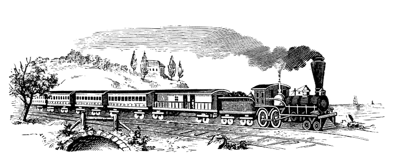
DECEMBER 16, 1954 HAMILTON JOURNAL DAILY NEWS
"Butler County History…by Alta Harvey Heiser
John Crane's Map of 1855 Shows Present Butler County, Streams And How Course of Miami River Changed By Flood; Many Millraces Constructed In Early Days' First Bridge; Destroyed In 1866
The railroads on Mr. Crane's [1] map [2] provide another interesting study. The old CH&D, [3] the Junction, [4] and the Hamilton and Eaton are, as we know them, under different names. The first two are now Baltimore and Ohio and the third is the Pennsylvania. But, the 'Four Mile Valley Railroad' certainly looks like the real thing and shows that, as late as 1855, its promoters had not given up hope.
Railroad Fever
Having caught the railroad fever at this time, many groups of men were proposing to project lines westward. One such, starting from Cincinnati, is shown cutting across the southwest corner of the county, through Venice, touching a corner of Morgan Township, before crossing Reily Township, on its way to Chicago! A road was built down that way later, but did not touch Venice.
Other than this, most of the lines expected to connect with the CH&D at Hamilton. One of the earliest of these was the Four Mile Valley Railroad, shone as a completed project on our map! It branched off from the CH&D, just above High Street, was built right over the hydraulic to the river, where it crossed on a bridge of imaginary magnificence. Unable to crowd in at the foot of the hills on the west side, it made a wide curve over the C St., at Two Mile Creek, then followed the river to Four Mile. It closely followed the bank of the creek to where this turned westward, crossing the creek every few miles, rather than to try to follow its many bends. Then, turning north of west, it passed south of Darrtown, [5] went west a couple of miles, before making a broad curve to touch Oxford, as far as possible from the Junction Line. Turning north it disappeared over the line into Preble County.
In May of 1849, William Kennedy of Oxford wrote to John Woods that the "Board of Commissioners of the Four Mile Valley Railroad Co." would meet in Hamilton on June 4 and start next morning to examine their contemplated line preparatory to a survey of same. He asked to have Mr. Jaques, engineer from the Hamilton and Cincinnati railroad (not yet organized as the CH&D) join them as advisory engineer."
DECEMBER 22, 1954 HAMILTON JOURNAL DAILY NEWS
"Butler County History…by Alta Harvey Heiser
Work On Four Mile Valley Railroad Never Completed; Had Planned Tunnel Under Ridge On Beissinger Rd. To Save Three Miles; Assistance Of State Auditor Sought, By Dr. A. Porter
Last week, we told that, in May 1849, William Kennedy of Oxford asked to have the engineer [1a] for the Hamilton and Cincinnati railroad join the men interested in having a branch run up though the valley of Four Mile Creek on an inspection tour of their proposed line.
A month later, there was an item in the paper, which stated that engineers [1b] were at work on the Four Mile Valley Railroad, and had completed the survey, as far as Hueston's Mill. By tunneling under the ridge near the Jesse Corwin farm (on Beissinger Rd.) [2] for about half a mile, the line could be shortened three miles. The cost of such excavating would be 50 cents per square yard. As it would be through almost all limestone, they hoped to sell this to pay much of the cost of excavating.
The few papers found in connection with this railroad seem worthy of consideration, even though the road was never finished.
In April 1850, Dr. A. Porter, wrote from Oxford to John Woods, Auditor of State. He said that they had previously pulled together on public works and he now asked Mr. Woods to 'use a little wind' to help start cars on the Four Mile Valley Railroad. Their engineer had completed that survey to the state line and found it most favorable - low grade and easy construction. He said that Mr. Moore was running a line from Liberty, Ind., to cross the Miami River, near the mouth of Indian Creek, on to Cincinnati, leaving out of Hamilton and Rossville. If Mr. Woods would come to Oxford on a certain date, they would arrange a meeting at an hour to suit his convenience. They wished to rouse the people to the work. 'Now, it appears to me,' he wrote, 'that, as you find the different Rail Road Balls inclined to roll down the valleys to your place, you should give them a kick that would prevent them from passing you by.'
Railroad Reorganizes
Mr. Woods replied that he did not return home and receive the letter in time to attend the meeting. The H&C had reorganized, as the CH&D company, which took a deep interest in the several proposed lines to connect with theirs at Hamilton. He hoped to see a road through Eaton to Richmond built soon, as well as one to Connersville and Rushville. 'Quick transportation, cheap postage, and free labor are the great moving powers to be put into operation,' he opined.
Another year passed. In February 1851, the following letter [3] was written at Fair Haven.
Dear Sir:
I have thought I would drop you a line to let you know how we are getting along - Everything now seems to be in prosperous condition and, as to our Rail Road, the people along the route have resolved to make one. We organized on February the 14th and calculate to elect our Directors on four weeks from that day at Oxford, the most of the stock has been taken on this end to the route and the question is asked every day, if John Woods could be got to be President of the Company, as our folks place a great deal of confidence in you, that is, if they had you as a leader, it would go ahead with a rush, now we would like to know if you would serve - now come and assist us to make our Road, which i think will be one of the best in the county, except for the Cincinnati and Hamilton Road. There is no doubt but that there will be some opposition to you in Rossville, as they think you will not show them any favors and will want to run a line around them into Hamilton, but I think those matters can all be arranged so that we can all work together for good, please let me hear from you, so that I will know how to answer those many questions that are asked everyday.
Respectfully yours John Woods, Esq.
F. Kramer [4]
--------------------------------------------------
Reply Not Found
Mr. Wood's reply is not found, but we have this from John S. Scouller of Fair Haven:
'In the absence from town of Mr. Kramer, his partner in business and others interested in the R. Road, I opened your letter to him. We find that you are entirely mistaken as to the road for which we solicit your interest and aid. The Four Mile Valley R.R. Co. was chartered to construct a road from Hamilton to Richmond, Ind. It is behalf of this road that we solicit your interest & hope you will give us some encouragement to elect you as Director, expecting the Directors to make you President, etc.' [5]
--------------------------------------------------
However, Mr. Woods thought the interests of this road 'too local.' He favored the Junction road as it would connect direct with Indianapolis and would have the support of the Indiana people. [6]
Kossuth, Hungarian patriot, was in our country in 1851 and 1852, and the Four Mile Company secured the services of his typographical engineer, tis said. Their office was in the Butler County House, Rossville's elegant new tavern.
The Rossville Weekly Sentinel started publication in August 1853. It was happy to assure the public that the Four Mile Valley Railroad was pushing its work with extra energy - the tunnel would soon be started. Peter B. Bailey, president of this company, in March of 1854, reported an expenditure of $115,413.85. [7]
Since Mr. Woods was not connected with this company, we do not have the last, sad chapter. The embankments, still visible in some places, give mute story of the men who ventured much and lost all. Too many lines were trying to push through. The Eaton and Hamilton company and the Junction company had better backing.""

Plans for a Darrtown depot were dashed, when the Hamilton-Oxford rail line moved west through McGonigle. That meant that residents of Darrtown and vicinity had to travel to depots in other communities to take advantage of rail travel. The images below show four depots that served Darrtown and Milford township area, from the mid-1800’s into the 20th century. The photos (and accompanying captions) were taken from a paperback book titled “Railroads of Southwest Ohio” (Camp, Mark J. / Arcadia Publishers - 2010).
• The images are displayed (below) in the order that they appear on pages 81 and 82 of Camp's book.
• The "PRR" that is referenced in the following captions is an abbreviation for the Pennsylvania Railroad. That rail line north from Cincinnati through Hamilton, Seven Mile, Collinsville, Somerville, Camden... and beyond.
• The "PCC & StL" that is referenced below is an abbreviation for the Pittsburgh, Cincinnati, Chicago, and St. Louis railroad company.
• Railroad transportation was a vital part of life in southwest Ohio, as evidenced by the number of times that L.A. Miller wrote about using the train lines in his daily diaries that span three decades (1910 - 1937); see: People/families/Miller,LA/diaries.
"Camden's PRR depot dates to the late 1880's, after the PCC&StL purchased the Eaton and Hamilton and constructed a new line from Hamilton into Cincinnati. In this c.1910 postcard view, a PRR accommodation is about to pick up some travelers. After closing, the depot was moved to a site on Fisher-Twin Road and modified."
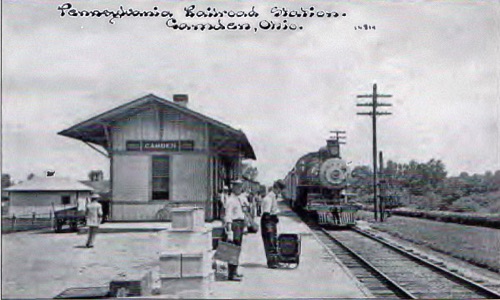
"The Eaton and Hamilton operated between Hamilton and Somerville by May 1852. It is likely that this depot dates to the 1850s or 1860s and either is an original E&H design or was built during the tenure of the Cincinnati, Richmond, and Chicago Railroad. The architectrure is not typical of PRR structures in this region."
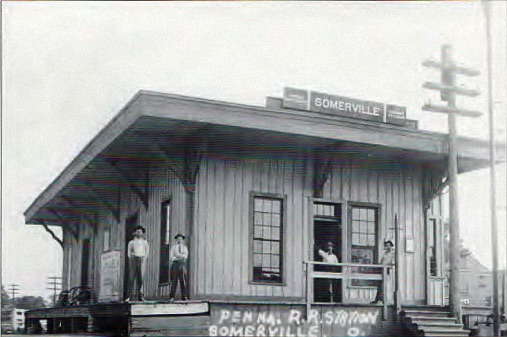
"Collinsville's PRR depot is shown (right) in the c.1910 postcard view. This is a later depot, probably replacing an original Eaton and Hamilton structure."
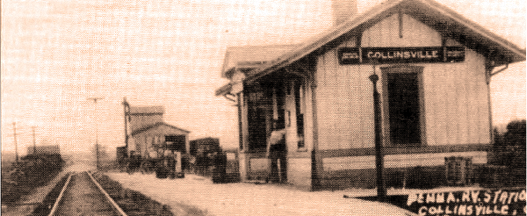
"Seven Mile (at right) is of similar architecture to Somerville and probably dates to the time of the Eaton and Hamilton or Cincinnati, Richmond, and Chicago Railroad."
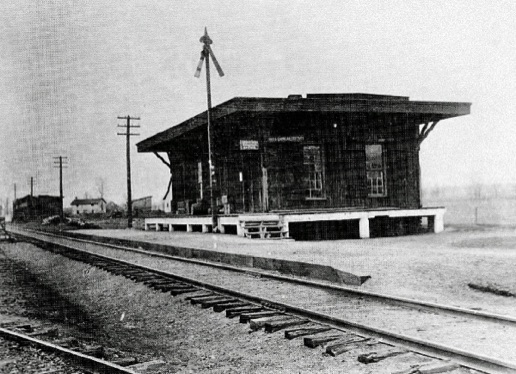
For the reasons cited below, the rail vehicle, known to some as a "traction car," is part of Darrtown's history. Also known as the "interurban" and/or the "street" car, the traction car was a common form of transportation, during the early part of the 20th century.
1️⃣ ORAL HISTORY
At the time of this writing (2019), some old-timers from the Darrtown area, who are now in their 70s, 80s, or 90s, remember their ancestors talking about "traction cars" that traversed the rail line that stretched from Hamilton north the village depots named above.
2️⃣ WRITTEN RECOLLECTIONS
As noted below, Mr. L.A. Miller referred to the traction car as a mode of speedy and convenient transportation, when he described traveling from Collinsville to destinations such as Richmond, Indiana and Columbus, Ohio.
In his 1932 diary, Mr. Miller wrote:
• "April 14: … I took the 8:40 traction car to Hamilton, Ohio. Arrived 11 AM."
• "April 11: … Grandson, William M. Miller took me to Collinsville, Ohio. Bus to Eaton, Ohio, arrived 2:45 PM. Street car to Dayton, arrived at 3:45 PM. Pennsylvania Railroad 420 PM, to Columbus, arrived 6 PM, Deshler hotel."
In his 1933 diary, Mr. Miller wrote:
• August 29: I left Columbus on 12:15 PM traction fast car for Hamilton, Ohio and arrived 4 PM."
In his 1937 diary, Mr. Miller wrote:
• “Saturday, June 5, 1937: … Emery Curtis, an old friend of the Miller family, who was killed by a traction car in Preble county, was buried at Collinsville, Ohio [this] p.m.”
3️⃣ DAYTON (OHIO) DAILY NEWS
The September 29, 2018 Dayton Daily News printed a story about a fully restored 1903 interurban car being placed at Dayton's Carillon Historical Park. The exhibit is scheduled to open in the summer of 2019. The news article included the description of interurban cars that appears at the right.
4️⃣ INTERNET INFORMATION
The traction car, which is synonymous with the term "interurban, proved to be a popular form of transportation in the early 20th century. More info is available at the Ohio Electric Railway website.
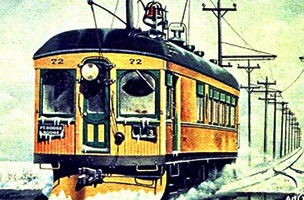
5️⃣ RICHMOND (INDIANA) PALLADIUM
The Richmond Palladium (Daily) - Volume 31, Number 363, 13 March 1907 edition - carried the following story that held promise of a new interurban line between Richmond, Indiana and Hamilton, Ohio.
"The electrically driven interurban cars traveled from city to city as opposed to trolley cars that were used on city streets. They could reach speeds of 70 mph and carried people from one town to another across the state."
See the full story at: Culp's Cafe in the Dayton (Ohio) Carillon Park.
Attorney Caldwell, of Cincinnati, was in the city yesterday afternoon, and at the office of the county auditor he made application for a franchise for the Richmond & Hamilton Interurban company. The county commissioners will meet Saturday of this week at which time this application will be presented to them, and It is more than probable that the franchise will be granted. Mr. Caldwell stated that the road would run from Richmond to Hamilton, along the Hamilton pike, through Boston and Darrtown in Butler county, Ohio.
Mr. Caldwell stated that all the right of way had been secured and that the road had been financed. "All that is necessary to make the road an assured fact is a franchise through Wayne county," stated Mr. Caldwell.
The Ohio law requires that the right of way be granted by each property owner along the line of the proposed road. These rights of way have been secured in Butler county, and Mr. Caldwell stated that the property owners in this State along the proposed route had also given rights of way to the company, Queen City Capital.
The road is backed by Cincinnati capitalists, the principal promoter being Herman Duhme, Sr., of Wyoming, O. Mr. Duhme was formerly the head of a prominent jewelry store in Cincinnati. Money for building the road will be advanced by the State Trust and Loan company of St. Louis, Mo.
The proposed traction line follows the same route as the road which was promoted about four years ago by James Forkner, a well known Ohio business man, who is now on his death bed. Mr. Forkner secured a franchise through this county, but never financed the road, because of ill health, which compelled him to retire from active business affairs.
The new road will nearly parallel the line of the road that is to be built between Richmond and Hamilton by Cincinnati, Hamilton, Oxford and Richmond capitalists. A. C. Lindemuth, of this city, intimates that the Ohio & Indiana Traction company is not discouraged by the appearance in the field of the Richmond & Hamilton Traction company. Nearly all the stock in the former company has been subscribed and work, it is stated, will soon be started on this line.
With the probability of a third traction company, the proposed Cincinnati, Bluffton & Chicago, running between Richmond and Hamilton it seems certain that there will some kind or traction connection between the two cities within the next year.
URL for the Palladium story: https://newspapers.library.in.gov/cgi-bin/indiana?a=d&d=RPD19070313.1.8&e=-------en-20--1--txt-txIN-darrtown------
Links to items further down this page...
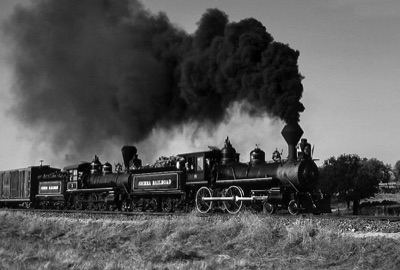
If you "Google" the phrase, "Yes, Virginia," then you will likely access a story about a newspaper editor's response to a young girl who questioned whether Santa Claus was real. In a similar fashion, we can now confirm that, "Yes, there really were plans to build a railroad that would go through, or near, Darrtown."
For years, older generations, that were familiar with Darrtown lore, told younger generations about the railroad that was to be built and run through Darrtown. The story-tellers would cite the "levee-type" land formation south of town, as proof that the story was true. NOW, RECORDED HISTORY SUBSTANTIATES THE LEGEND!
L. A. Miller, of Darrtown, leads local group in effort to retain railroad depot; 1852 deed cited in decision

A 1930 newspaper article (see links below) reported the success of a citizens' group that sought to retain the railroad depot at Collinsville - after the railroad company petitioned to abandon the station. An 1852 deed, struck between Johnson Davies, the landowner, and the railroad company, proved to be the deciding factor in favor of the locals.
If you have information and/or photos related to this story that you will share, please contact the webmaster.
The following article appeared in the Journal News, (Hamilton, Ohio) September 10, 1930 - page 15. The headline read: “Collinsville wins R.R. Station Plea On Deed of 1852.” The text of the article read as follows: “A provision in the original deed from Johnson Davies to the Eaton and Hamilton Railroad, dated December 21, 1852, won for the village of Collinsville, the right to retain the Pennsylvania railroad station in that community, when representative citizens of Collinsville and Darrtown, headed by L. A. Miller, appeared before the State Utilities Commission in Columbus, Tuesday. Protesting the petition of the Pennsylvania Railroad company to abandon the station at Collinsville, the men appeared in Columbus, with a copy of the original grant, in the offices of county recorder, Karl W. Eberling, which set forth certain restrictions and reservations held by Johnson Davies and his heirs. The deed provides, in brief, that if the station is abandoned, the railroad company is no longer owner of the land upon which the station itself, and the railroad tracks are located at that point. The Davies deed provided that his land was sold in consideration alone that a station and tracks be built there. The decision of the commission was based principally upon the opening provision, which states ‘in consideration of the establishment of a station and depot for the receipt and discharge of freight and passengers upon his land at Collinsville and of the sum of $200 to him, in hand, paid Johnson Davies of the town of Collinsville hereby sells, grants, and conveys to the Eaton and Hamilton Railroad company for the use of the railroad and accommodation of the business, thereon the described tract of land.’ ”
The Collinsville depot stood at the east end of Depot Street. At some point (date, currently unknown), the depot was moved from the village to a farm south of Collinsville on the Hamilton-Eaton road. See maps below.
The link at the right reveals some memories of the Eaton Road depot.
In August 2024, Paul Gillespie, Milford Township Trustee and longtime resident of the Collinsville area, along with Fred Lindley, the webmaster of this website and former farm boy from the Darrtown area - engaged in a phone call that produced the following memories of the Collinsville railroad depot. ----- Paul and Fred’s memories of the depot are connected to the time when it was located alongside Eaton Road, about a mile south of Collinsville. The building stood at a spot where Eaton Road runs east and west for a short distance. The depot was located on the north side of the road and faced the south. ----- Neither Paul nor Fred knows how - or why - or when - the depot was moved from Collinsville to the farm site. Paul recalls that the Eaton Road property was part of the Maple Leaf Farm, which he thinks was owned by a fellow named McClintock (sp.?). Paul also associated the land with a Clark Marion and a man named Schuster. ----- Both Paul and Fred remember that, during the late 1940s and 1950s, various community groups used the building for meetings and social events, including dances. Paul remembers attending Boy Scout meetings in the depot and Fred recalls that the Milford Township 4-H club met there also. ----- The building no longer exists and the story of its removal is unknown.
Our information about the traction car comes from the following sources:
To see background info about the Miller Diaries, visit: The Miller Diaries
The December 16 column began with a discussion of Butler County (Ohio) waterways and then shifted to a review of railways; with particular attention given to the Four Mile Valley Railroad. Only the railroad portion of the December 16, 1954 article appears below. The December 22 column appears in its entirety.
1937 Newspaper Story Cites Interest in the Four Mile Valley Railroad
The link at the right shows an image of the original story.
The original story has been transcribed below.
The following article appeared in the Hamilton (Ohio) Journal News, November 20, 1937, page 13.
“Railroad through Darrtown Seriously Considered
By Alta Harvey Heiser
In an earlier sketch, we spoke of the Four Mile Valley railroad, which was to connect with the C. H. and D., north of Hamilton and follow the valley to Darrtown, Oxford, and on up through Preble County to Richmond. Although this project never was completed, for several years, it was one earnestly entered into by prominent Butler County men, who gave up their time and money to make a goal of it. For that reason, it is deserving of mention.
The only records to which we have access, besides a very few newspaper notices, are letters written by interested parties, but the clearly identified embankments that remain speak eloquently of a railroad which never came to be.
At the beginning of 1849, long before the C. H. and D. had ironed out its difficulties, plans were laid for numerous lines to connect with that road. Surveys were started down the Ohio river for a line to connect Cincinnati with St. Louis. At once, there was strong protest from Hamilton. An editorial in a Hamilton paper said that because of floods, hills and what not that line never would do. The best route would be by way of the C. H. And D. to Hamilton and then westward to Richmond and on down through Indiana.
Ignoring such propaganda, the engineer at Cincinnati said that the route down the Ohio was the only practical one, as the hillsl west of Hamilton prevented any possible outlet there.
The men of Butler County were not the kind to abide by the decision of any, but the engineers of their own selection, and were determined to prove that where there was a will, there was a way. In a short time, there were three lines routed westward from Hamilton, at least in the minds of their would-be promoters.
In the following letter, we find our first reference to the Four Mile Valley railroad:
'Oxford, Ohio, May 28, 1849.
John Woods, Esq.
Sir:
The board of commissioners of the Four Mile Valley Railroad company are to meet at Hamilton on Monday, 4 June next, and the next morning to commence the examination of the line of their contemplated road preparatory to a survey of the same. I have been employed to make the survey and said company are desirous to secure the assistance of Mr. Jaquish (C.D. Jacques), the engineer on your road to Cincinnati, to pass over the line with us, and also to examine the report of the survey, when done, and to act as advisory engineer.
I am informed that a meeting of the board of directors of the Hamilton and Cincinnati railroad company will be held in Cincinnati on next Friday and that you are one of the directors. If so, and should you attend the meeting, will you consult Mr. Jaquish relative to the above and inform me at your earliest convenience, whether he can be procured in such a manner. It is the object of the Four Mile company to connect with your road above Hamilton, and also to make other arrangements with them for future operations.
Yours, William Kennedy'
Just a month later, we learn from newspapers, engineers were at work on their surveys, which at that time were made as far as Hueston's Mill. This mill was about a mile west of Fearnot Mill located at the point where the Eaton turnpike crossed Four Mile Creek and superintended by James Woods.
Jessie Corwin, prominent Hamilton attorney and brother of the honorable Thomas Corwin, who had been governor of Ohio and was at this time secretary of the treasury in President Fillmore's cabinet, lived over a mile south of the creek, about halfway between the two mills. The land was high between his home and the creek and it would require three miles of line to run around the elevation. So, it was proposed to do half a mile of tunneling. The excavating would cost $.50 a square yard, but the part to be tunnel was about all limestone, which could be sold to cover most of the cost of excavating.
10 months later, from a letter written by Dr. A. Porter, of Oxford, we learned that the survey was completed and that it joined the Eaton and Hamilton railroad at the state line. Dr. Porter said that it was a remarkably favorable line and one easy of construction. He asked John Woods to cooperate with them by giving 'a little wind to start the cars.' They wished to hold a meeting in Oxford to arouse the people there and asked Woods to address the meeting.
Dr. Porter called attention to the line being surveyed from Liberty to cross the Miami at the mouth of Indian Creek leaving out Hamilton and Rossville. He said 'Now it appears to me that, as you find the different railroad balls inclined to roll down the valley to your place, you should give them a kick that would prevent them from passing you by. I know that you are an internal improvement man and feel disposed to build up our common country by encouraging any and all improvements that would have that tendency.'
Mr. Woods was in Columbus and could not comply with the doctor's request, but he wrote giving assurance of his interest in the Four Mile Valley Road.”
